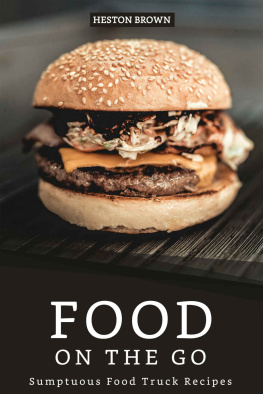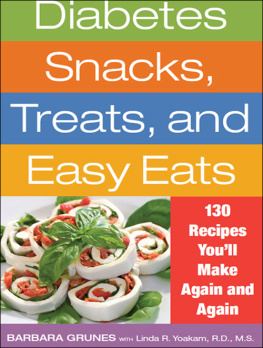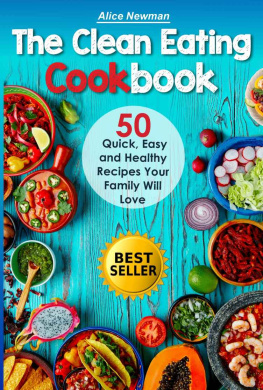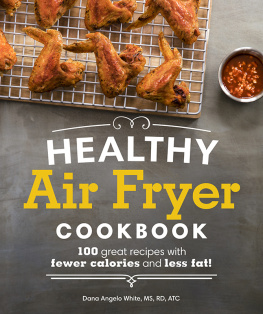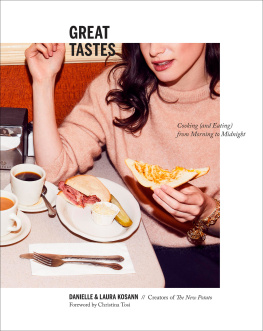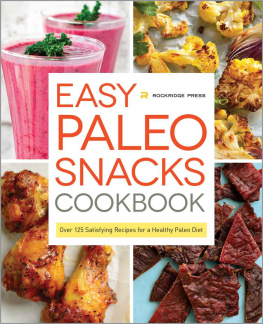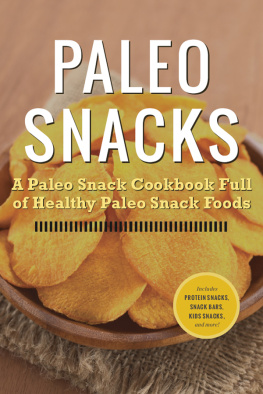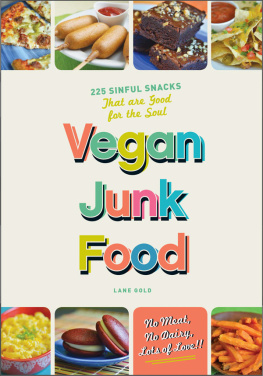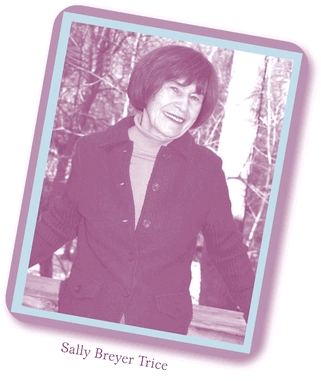Acknowledgments
First, to my mother, Sally Breyer Trice, who had me cooking from the moment I showed interest at age two. She allowed my sisters, Stefanie and Elizabethand all the kids in the neighborhoodand me to cook and bake without ever admonishing us for dropping eggs on the floor or breaking a dish. The kitchen was a free space for creativity and experimentation. I created my first original recipe of cottage cheese and raisins in a lettuce cup at age three. My mom wrote it down on a recipe card and still has it. Thank you, Mom, for teaching me about healthy eating, giving me both a healthy body and the knowledge of how to make great-tasting food that is also good for me. I also appreciate all of Moms help in testing the many recipes in this book, and for sharing the photo she took of me baking that is on every Lauras Wholesome Junk Food cookie tub.
Thank you to my grandmother, Helen Breyer, who is no longer with us, for teaching my mother to cook. Grandma moved from the hustle and bustle of Manhattan to a small country farm and had six children that she had to stretch every penny to feed. Everything was homemade and as healthy as she could make it. I am in her kitchen, baking cookies, on the Lauras Wholesome Junk Food label photo.
Thank you to my friends, Cole, Lisa, Heidi, Katelyn, and Pats girls. Thank you to my sisters, Stefanie and Elizabeth, and brother-in-law, Mark. To Erika Penzer Kerekes, an amazing woman, writer (in Erikas kitchen), and chef, who contributed recipes that I enjoyed eating many times, and also took me in during a difficult period. To Karen, Char, Sharon, Perry, Joe, and Rich, all people who believe in me and make Lauras Wholesome Junk Food and Dr. Laura tick! And a very special thank you to my teachers and advisors, Geoffrey, Dr. Pat, Laurel, Ira, Patricia, Carole, and David.
To Char and my mom, thank you for the editing help. You ladies made all the difference in the world with your insights and suggestions. (Mom, a former English teacher, reread this many times during a very busy time to make sure it was just right.)
I appreciate my agent, Andrea Hurst, who took a chance on a first time author, and Jonathan Kirsch, Esq., who helped with the details. Thank you, Running Press for your expertise. To Geoffrey Stone, my patient editor, who guided this to be better than I imagined, and Amanda Richmond, Frances Soo
Ping Chow, and Steve Legato, whose visual gifts made it delicious to look at. Thank you to my generous contributors, Mom, Cole, Erika, Mrs. Arciero, and Linda Stone, who shared a select few of their secret recipes with me.
Notes
CHAPTER 1
Better Diet
I love food! I love sweets!
I love junk food!
Food is about joy and sharing meals with those we love. Food is fun to create and fun to eat. It is a pleasure to nourish the bodies we have been given. American traditions revolve around food, especially junk food. Theres the ice cream social, the bake sale, Cracker Jacks, and apple pie. The American diet used to consist of high-fat comfort foods, but we also did more physical activity, and the food had better, less-processed ingredients.
We seem to be coming full circle, with the best from the past and also new improvements. In the previous century we learned how to refine sugar, flour, and fat and create inexpensive foods that have long shelf lives and look prettyonly to realize that the ingredients we used before doing all that processing were actually better for us. We are truly in a discovery process when it comes to food and how to best care for our bodies while also pleasing our taste buds.
Today, scientists and the government look at health and food and make recommendations to make our food better for us through, for example, enrichment (adding back what was taken out in processinglike enriching flour with B vitamins) and fortification (adding something that was never there, like calcium to orange juice). But it is really our job as individuals to stay aware, use our good sense, and practice consistent body care, inside and out, to the best of our ability. No one has every food answer; one minute we are told something is good for us, and the next we are told it is not. My goal here is to combine current information, my personal experience, and what makes sense to me in an easy-to-understand and fun-to-read book.
Many cookbooks talk about better foods. I am focusing on better sweets and snacks, as I feel that that is where most of us get in trouble. We say we will allow ourselves another treat, or we snack so frequently on unhealthy snacks that we are negatively impacted by high amounts of refined salt, sugar, and trans fats.
Traditional American favorites have gotten a lot of bad press lately, and I disagree with what is being said. Its not the food choices that are the problem; it is just a few of the ingredients. Am I really supposed to give up the foods that are fun for me and my family to make and eat? Are we really supposed to consume bran instead? I dont think so. These foods are part of our heritage and traditions. I love the foods we all enjoy eating for desserts and snacks, and I think they taste great. I, for one, do not want to give them up! Nor do we need to. We either need to get these recipes back to the wholesomeness they once had, or use one or two new, high-quality ingredients that are better for us but were not readily available when our grand-mothers came up with the recipes. Today there is a new awareness about food sensitivities to things such as milk, eggs, and certain grains that many of us have to work around. This cookbook also takes that into consideration.
Crib Notes for Decoding Food Labels
One main way to have a better diet is to understand more about your body and what it needs. Our bodies need certain types of foodyes, even fatsto thrive. However, we do not need all the unpronounceable ingredients that have been added to increase shelf life and decrease cost. Our bodies were created to break down and process foods, and our bodies do not like everything to be preprocessed before being eaten. Yet so many foods have processed salts, refined sugars, artificial colors and flavors, and preservatives. And they often contain hydrogenated oils that contain trans fats as well as animal products from unhealthily raised animals who receive hormones to make them grow faster and antibiotics to cure illness caused by cramped living conditions. When I read most ingredient labels, I find words that are difficult to pronounce, even with my degrees in chemistry and medicine.
For a long time I have been wondering why so many people are eating foods that make them gain weight, feel tired, or develop other health problems. I have come to understand that there is a direct correlation between what people eat and how they feel.I want you to understand what a better diet is and to help you decode the food labels so you know what to look for.
The quick foodie rundown is that all food is made up of three basic things: carbohydrates (like baked potato or fruits), protein (like eggs or fish), and fats (like olive oil or butter). So, what are all those other things that I cant pronounce? Most often they are artificial ingredients, chemicals, or gobbledygook, as my mom called them when I was growing up.
This section may look intimidating; however, if you are willing to get through it, you will understand food much better. If you still have questions, please visit my Web site at www.lauraswholesomejunkfood.com or e-mail me at Dr laura@lwjf.net.
How do I eat? I allow myself to nibble on raw nuts, fruits, and vegetables throughout the day, without worrying about quantity. I do watch the quality and amount of treats, animal products, and starches that I eat. My particular guideline is that I do not bring white flour or white sugar into my house. I know myself! If there is something in the house that is not good for melets say a cake or chipsI will eat more than I want to in an evening and then not feel good the next day. That is me. You may have more discipline that that.


